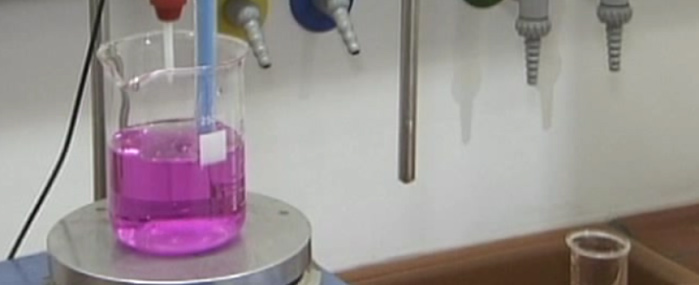
Direct Links:
Filtration
Filter funnel with filter paper: A common filter funnel can be used to separate a solid from a large amount of solvent, eg when a desiccant has to be separated from an organic solvent. A filter paper is folded into a cone and placed into the funnel. The suspension of solid and liquid is then poured through the funnel. The clear solution can be collected beneath the funnel.
High-speed funnel with filter paper: To separate small amounts of solids, mostly salts, from aqueous solutions in analytic chemistry, a high-speed funnel can be used. The strong surface tension of water combined with the helical ribs of the funnel cause a strong water flow. The water flow leads to a pull, which speeds up the filtration.
Büchner flask with Büchner funnel: In order to separate a solid product from a solution, a Büchner flask can be used. A rubber tubing is fitted on the hose barb and a vacuum source is attached to create a partial vacuum in the flask. A rubber bung and the Büchner funnel is placed on top of the flask. A ceramic Büchner funnel with filter paper is mostly used, because it is easier to clean. The funnel can also be made of glass with a sintered glass disc of defined pore size inside. This kind of funnel is used to determine the weight of the solid by comparing the weight of the empty funnel to the weight of the funnel with solid. According to the experiment different sizes of flask and funnel can be used.
To demonstrate the handling of the Büchner funnel an experiment is performed. After creating a partial vacuum in the flask, the filter paper in the ceramic funnel is moistened to improve its fit. The reaction mixture is poured through the ceramic funnel and the clear solution is collected in the flask. The magnetic stirrer and the beaker are rinsed with water to maximize the yield. The solid on the border of the funnel is rinsed and the product is washed with water. Once the filtration is complete, the residue can be collected off the filter paper using a spatula.